White Camphor Essential Oil: Uses, Benefits, and Blends
Scientific Name: Cinnamomum Camphora
Origin: China
Plant Part: Wood
Scent: Sharp, fresh, cleansing, clinical, camphoraceous
Color: Clear
Consistency: Thin
Perfumery Note: Middle to Top
Initial Aroma Strength: Very strong
Extraction Method: Distillation and rectification
Suitable Blending Oils: Scents that have a fresh open-air dimension. Think conifers and herbs like rosemary and frankincense.
Breaking Down the White Camphor Essential Oil’s Chemical Components
The major chemical components of white camphor Essential Oil are:
- Limonene: 14.02%
- Alpha Terpinene: 30.18%
- 1.8 cineole: 36.63%
- Para cymene: 13.53%
White Camphor Essential Oil Properties
Antiseptic, antipruritic, rubefacient, abortifacient, aphrodisiac, contraceptive and lactation suppressant. (Singh, 2012)
What is White Camphor Essential Oil?
Now there is an excellent question!
Warning, A complicated answer is incoming.
Camphor is steam distilled from wood from the Cinnamomum Camphora tree. This tree is known in Japan as hon-sho and yu-sho in China. (Peace Rhind, 2019)
Steam is passed through the plant matter, where ordinarily you would end up with Essential Oil sitting on top of water (hydrolat). However, camphor also produces a crystalline substance. This substance is known as crude camphor.
This is then placed under the pressure of a vacuum which produces another 50% crude camphor.
What remains is now free of camphor.
This is then fractionally distilled (this is like being steam distilled but in this case, the distillation keeps being stopped (fractioned) at certain time intervals. This is done because chemical constituents move across into the oils at different speeds, this way they can be captured and sorted.
This creates three different types of Camphor Essential Oil.
Blue camphor mainly contains sesquiterpenes, brown camphor is around 80% safrole and because of its high levels of safrole, brown camphor may be carcinogenic.
Finally, we have our white camphor Essential Oil which contains mainly cineole and monoterpenes. White camphor Essential Oil is the most commonly available of the camphor oils.
Do Not Confuse Camphor Essential Oil
White camphor Essential Oil is sometimes referred to as Hon Shu
Another chemotype of the same tree grows in Madagascar. It is high in 1,8 cineole and is known as Ravindra.
Hon-sho also has an Essential Oil distilled from leaves. High in linalool, this oil is known as Ho-Leaf oil.
Is White Camphor Essential Oil Safe To Use?
Yes, it is safe topically.
At Vinevida, we never endorse the use of Essential Oils via ingestion, however, we would like to stress that White Camphor Essential Oil is particularly dangerous to ingest. The constituents move very quickly from the gastrointestinal tract to the bloodstream and can cause poisoning and seizures.
An additional note is that white camphor Essential Oil contains high levels of monoterpenes. These oxidize quickly and can cause skin sensitization. As such then, camphor has a short shelf life.
Shelflife of White Camphor Essential Oil
Replace your bottle of white camphor Essential Oil every two years.
The Cultural And Religious Significance of White Camphor Essential Oil
The Camphor tree is one of the most precious things of the Asian world. It has a high economic and cultural status, mainly because of its medicinal properties since around 70% of pharmaceuticals in Asia come from natural derivatives. Camphor is not only part of their traditional pharmacopeia but has high value as an export commodity.
Additionally, camphorwood has strong insecticidal abilities and so beautifully carved chests were very fashionable in the nineteenth century.
Astonishing Trees
In China, 75 villages, 13 townships, and a city have all been named after the camphor tree. The tree itself has been selected as the city tree in 36 cities and 2 provinces and 36 cities which means that no fewer than 172 million citizens venerate camphor as their city tree. Some of these trees are incredibly ancient having been over two millennia ago.
One of the reasons the camphor tree is venerated is its resilience and ability to overcome adversity. This was demonstrated most extremely in 1945 when trees close to the atomic bombings of Nagasaki and Hiroshima survived the blasts Hibakujumoku “survivor trees”). Every person at the Shirakami Shrine in Hiroshima was killed on that terrible day in August, yet three trees growing less than 500 meters from the hypocenter survived. Every part of the trees above ground was burned, yet the camphor were the first trees to recover and soon the three trees re-grew from their surviving roots.
No wonder then the tree is venerated for its knowledge of resilience, recovery, and vitality, but also to be associated with protection, comforts, and blessings.
The Brightness of Camphor
Its fragrance is happy, cool, and light, making you feel protected and refreshed. Camphor burns with an incandescent, so bright, yet it burns to nothing. Thus, in Buddhism it is said to represent the destruction of the ego, burning it away and only emitting positivity in its wake.
Its bright flame indicates that small amounts are added to fireworks in Japan, presumably also refreshing the otherwise sulfurous smell.
Religious uses of Camphor
In Islam, The Qur’an stipulates that camphor, or "kafur" (and cardamom) must be used to fragrance the shroud before burial and it is said to season the wine given to believers in heaven.
In verse 5 of Qur'an 76, "kafur" also refers to a spring in paradise or, perhaps, a spring infused with the smell of camphor, The righteous and servants of God drink from it however, it is said to be different from the camphor of our world. (Wikisha)
In India and Nepal, camphorwood is cultivated for burning at cremations.
Solid camphor also is importantly used in Hindu religious ceremonies and is part of Aarti, the 'ceremony of light'. Sadhu monks and the pujaris (who are attendants of the deities) wave ghee-soaked lighted wicks before the sacred images to infuse flowers and the flames of the camphor with the Deities' love, energy, and blessings.
A white cloth, or wisp is used to move the blessings. Each element of the ritual represents the five elements of the world – 1) space (white altar cloth), 2) air (wisp), 3) light (flames), 4) water, and 5) earth (flowers) – This symbolizes offering all of creation to the Deity. In return, the Deity offers blessings.
Arti also refers to a hymn of praise sung when a pujari rings a little handbell while waving the wicks. Joyously sung and accompanied by bells, drums, and gongs, the ceremony is opened and closed by blowing a conch shell. Once the prayer is concluded, the lighted wicks are passed around the congregation so members can receive the blessings of the deities that have been infused within the flames. To receive these members gently wave their own down-turned hands over the flames, then touch them to their eyes and head. Camphor purifies the air for the blessing to be conveyed from the Deities to the flame, and then to be passed to the supplicant.
Understanding The Energetics of White Camphor Essential Oil
Ayurvedic medicine describes Camphor as being cooling, balancing Kapha and Vata doshas.
Ayurveda speaks of three main states. Vata, Pitta, and Kapha doshas, and is interested in correcting imbalances between them.
Vata dosha is dry and brittle. This speaks to the skin, but also the hair, the bones, the digestive tract, and even the thoughts.
A good way to think of vata dosha is as sand being blown by a desert storm. It dries the skin and makes it sting. The mouth gets dry, and the eyes struggle.
Kapha dosha is like thick mud. Imagine mud in the body. Things get too thick to move. Think constipation, indigestion, greasy, dirty skin, lethargy, stiff joints, water retention, and of course, stagnant thoughts that ruminate and don’t seem to shift.
It helps to control the inflammation and adds a soothing effect on the body. Camphor has a healing effect on the skin.
In Vedic Astrology, Camphor is known as Chandrabhasma and is used as a talisman about the “malefic of the moon”. A very basic interpretation of that would be disturbances of the mind and emotions. However, the moon also has physical manifestations in the body, including breasts and fertility. Later, you will come to see how beautifully that could play out for some women.
How Does White Camphor Essential Oil Make You Feel?
In 1999, Vernet-Maury et al. studied how Essential Oils seemed to evoke certain emotions and so, in turn, this affected the nervous system. participants rated the “pleasantness” or “unpleasantness” of several odors including camphor.
Camphor was associated with “surprise” or “happiness” or “surprise” but was also linked to “sadness”, which differentiated it from other odors like lavender. (Vernet - Maury, 1999)
(Presumably for at least some of the participants there may have been a memory association with funerary ritual, perhaps)
Despite the “sadness” rating, this did not gain a rating of “unpleasant”. (Vernet - Maury, 1999)
It should also be noted that for many people camphor rings to mind dusty chests and mothballs, but it is so distinctive that it has its smell descriptor of being Camphoraceous. (Chen, 2013)
White Camphor Essential Oil for Respiratory Support
Perhaps the most useful white camphor Essential Oil properties are how it decongests blocked noses and calms coughs.
White camphor has antitussive properties which calms dry coughs and splutters, but also helps to move thick catarrh off the chest.
Traditionally, in China, camphor is added to liniments for aches and pains. There are many treatments on the market containing camphor for rheumatism, arthritis, muscle pain, and inflammation, (Lee, 2006) (Singh, 2012) It is rubefacient, so brings warmth to the joints as the circulation is circulated.
White camphor has strong anti-fungal properties. (Quan-li,2014)
Research into The Antimicrobial Abilities of White Camphor Essential
Perhaps the most important aspect of the research into white camphor Essential Oil is its antimicrobial abilities. It has strong potential against many pathogens. As such, this area has been well explored and demonstrated against both gram-positive and gram-negative bacteria.
The difference between the two, very simply put, is the anatomy of the protective cell wall and how it uses a substance called peptidoglycan. This is a rigid scaffold that envelopes the cell plasma.
Gram-negative bacteria are surrounded by a thin peptidoglycan wall, which is in turn surrounded by an outer membrane.
Instead of having this outer membrane Gram-positive bacteria are enveloped by thick layers of peptidoglycan much thicker than is found in the Gram-negatives.
Gram-negative bacteria (GNB) are among the world's most significant public health problems because they evolve incredibly quickly to become resistant to antibiotics. These microorganisms are both economically and fundamentally expensive. Patients in the intensive care units are particularly at high risk from gram-negative infections and they are a key driver towards morbidity and mortality.
Study comparisons show that while white camphor Essential Oil is effective against both gram-positive and gram-negative bacteria, its greatest power lies in controlling these gram-negative. (Zhou, 2015)
It should be stressed that all the following trials are from experiments done culturing bacteria and then attacking them with camphor Essential Oil in Petri dishes. None of these have so far been proven to treat, cure, or prevent disease in human trials, or more importantly to offer blanket protection in a clinical setting. Research continues to isolate which chemical constituents offer the most protection and to find ways to encapsulate these to use them clinically.
Antimicrobial Abilities Of White Camphor Essential Oil
White camphor Essential Oil showed effective antibacterial activity against Serratia marcescens. - a colonist of urinary infections most often caused by catheterization. (Poudel, 2021)
Against Aspergillus fumigatus, a disease which targets immunodeficient patients. (Poudel, 2021)
Listeria monocytogenes is a ubiquitous bacteria that is primarily transmitted by ingestion of contaminated food products. The bacteria penetrate the intestinal tract to cause gastroenteritis and fever in everyone. Worst case scenario though, listeria monocytogenes is capable of causing severe illnesses, including meningitis, encephalitis, and sepsis. Again, most at risk from this pathogen are. Those are the immunocompromised, newborns, and the elderly. This is also a bacteria that can be problematic in pregnancy, causing stillbirth or spontaneous abortion. Preterm birth is also common.
Camphor essential has also shown abilities against Pseudomonas aeruginosa a multidrug-resistant pathogen recognized for its ubiquity, its intrinsically advanced antibiotic resistance mechanisms, and its association with hospital-acquired infections and is associated with ventilator-associated pneumonia and various sepsis syndromes. (Chen, 2020)
Enterococcus faecalis is found in most healthy individuals but can cause urinary tract infections, endocarditis sepsis meningitis, and other infections. Again, white camphor Essential Oil demonstrated abilities against it. (Chen, 2020)
In a petri dish, camphor Essential Oil exhibited significant inhibitory action against a biofilm of Escherichia coli after exposure of just 30 minutes. It also increased the ratio of dead to live E. coli cells on cells that had been collected from dairy cows with endometriosis. (Wang, 2020) If you are not convinced you’ll need to cleanse the udder of a poorly heifer any time soon, think about how useful white camphor might be for cleaning down kitchen surfaces. Ecoli causes gastroenteritis and mainly comes from undercooked, contaminated foods.
Antifungal Evidence of White Camphor Essential Oil
There are many different species of Candida and together the group is ranked as one of the most common organisms causing hospital-acquired infections. Patients who have recently had surgeries, or transplants or are in the Intensive Care Units are most at risk from them C-albicans infections are one of the main ways critically ill and immunocompromised patients catch fungal infections. These patients usually develop oropharyngeal or thrush candidiasis. This can lead to malnutrition and prevent proper absorption of medication.
In hospitals, about 40% of infections in immunocompromised patients pass from healthcare workers. Systemic fungal infections (fungemias) including those by C. albicans have emerged as important causes of morbidity and mortality in immunocompromised patients (e.g., AIDS, cancer chemotherapy, organ or bone marrow transplantation).
- albicans often form biofilms inside the body. These layers of slime adhere to surfaces to colonize communities of bacteria and other microorganisms. An example of this might be the formation of medical devices implanted in the body. (although think of tongue piercings too)
When analyzed, these biofilms often form in conjunction with Staphylococcus aureus.[12][13][82][83] Multispecies infections lead to higher mortalities.][85]and once candida cells are introduced into the bloodstream statistics predict a mortality rate of between 40–60%. [11][86]
White camphor, you might recall, also shows impressive potential against Staph aureus, in vitro.
Candida poses a considerable threat to immunocompromised people with serious diseases such as HIV and cancer but is also one of the most common organisms worldwide.
Everyone has some small amount of Candida albicans living on their skin, on the lining of their mouth, genitals, digestive and urinary tract. It forms part of the normal “microflora”, of the intestinal tract. It can also be transmitted through sex, or even to a child through the birth canal.
In health, it rarely causes problems but life challenges can cause the yeast to overgrow and cause candiasis. The most common manifestation of this is thrush, usually found in the vagina, but also found in the mouth and the sensitive skin of the groin and under the breasts.
The fungus then weakens the intestinal wall, allowing it to enter the bloodstream, circulate, and compromise immunity.
The causes of this can be myriad, long-term stress, hormonal imbalance, antibiotics, diet, contraceptive treatments, and obesity are just some factors, although there are more.
Viljoen et al. showed combining camphor with 1,8-cineole improved the antimicrobial effect against Candida albicans [45].
White Camphor Essential Oil For Athlete’s Foot
Sometimes, the sheer number of different products that are extracted from this tree can make the evidence ambiguous. One such example is a trial that showed Camphor Essential Oil having very good antifungal effects against Trichophyton Rubrum a pathogen that colonizes the top layers of the skin. This can cause athlete's foot and ringworm. The leaves were used in the experiment. Strictly speaking, white camphor Essential Oil is extracted from the wood, so this is not proof of the use of our Essential Oil. However, camphor is traditionally used for athlete’s foot in Chinese Medicine. (Poudel, 2021)
White Camphor Essential Oil For Pain and Itching
White camphor Essential Oil has a specific action on neuropathic pain, especially pain caused by certain chemotherapy drugs. This action seems to be because of its cooling mechanism. (Li, 2023)
Our brains register information about how cold something is through receptors in the skin. Camphor interacts with one of these TRPA1. (Li, 2023) This TRPA1 receptor takes information about cold, pain, and itching. It seems as if its actions may be a counter-irritant. (Li, 2023)
Camphor’s numbing effect means it is included in many treatments for very itchy skin including for poison oak. (usually combined with menthol)
White Camphor Essential Oil and Fertility
White camphor Essential Oil is anaphrodisiac. This is not a typo…it means that it turns you off it.
Camphor is known to modulate sexual activity, and contraception, induce abortion, and reduce milk production in lactating women. It can pass the placental barrier and affect embryo development. (Sikkha, 2018)
White camphor Essential Oil’s suppression of mother’s milk can be useful in cases of breast engorgement. (Greene, 1938) However, since it is important not to have camphor close to the baby's face (1,8 cineole) this is best used on the lower back or the wrists and allows the constituents to circulate in the bloodstream.
Ideally, though, white camphor Essential Oil would not be used during breastfeeding but may be a compassionate choice after babies who have been born still or infant death.
White Camphor Essential Oil Uses: For Wholesale Purposes
Aromatherapy
Refreshing and calming.
Soap Making
Does not have appropriate applications.
Natural Perfumery
Lovely in green fragrances.
Precautions
Not suitable in the first 16 weeks of pregnancy.
White camphor oil is high in monoterpenes and so will be subject to fast oxidation. IFRA guidelines suggest adding an antioxidant to any oil with high levels of limonene, so consider this for preparations that may not be used immediately.
White Camphor Essential Oil Blends: DIY Recipes
White Camphor Essential Oil Cream for Athlete's Foot
- 2 oz Aqueous cream
- 5 drops White Camphor Essential Oil (Cinnamomum Camphora)
- 10 drops Lavender Essential Oil (Lavandula Angustifolia)
- 10 drops Tea Tree Essential Oil (Melaleuca alternifolia)
- 1tsp Antioxidant Preservative
Method of use: Apply to all parts of the feet (especially between the toes) twice a day.
Also scrunch tea tree or white camphor Essential Oils into the socks to ensure that all microbes are killed and cannot reinfect the feet.
Safety: Not suitable for use in the first 16 weeks of pregnancy.
White Camphor Essential Oil Rollerball Recipe for Candida
- 9ml Grapeseed Carrier Oil (Vitis vinifera)
- 10 drops Tamanu Carrier Oil (Calophyllum inophyllum)
- 10 drops of Antioxidant Preservative
- 10 drops White Camphor Essential Oil (Cinnamomum Camphora)
- 10 drops Geranium Essential Oil (Pelargonium graveolens)
- 5 drops Allspice Essential Oil (Pimenta dioica)
Method of use: Apply five times a day, (or as often as you remember) to the pulse points on the inside of the wrist. This gives good access to the blood supply. Use for 1 month.
Safety: Not suitable for use in the first 16 weeks of pregnancy.
White Camphor Essential Oil Blend for Kitchen Surfaces
I like to use this once a week, to deep clean and get the house smelling amazing!
- 10 drops White Camphor Essential Oil (Cinnamomum Camphora)
- 10 drops Sweet Orange Essential Oil (Citrus Sinensis)
- 10 drops Clove Essential Oil (Syzygium Aromaticum)
Method of Use: Use a clean cloth. Soak with hot water. Apply the oils directly onto the work surface and smear over. Do not rinse away.
Safety: Not suitable for use in the first 16 weeks of pregnancy.
Why Choose VINEVIDA
At VINEVIDA, we love botanicals and the planet they come from. We believe in stocking the best at affordable prices and supplying to the discerning, which is why we are also members of both the Alliance of International Aromatherapists and the National Association of Holistic Aromatherapy. In recognition of our excellent standard of product, we are proud to hold a 2021 Certificate of Registration as a Cosmetic Products Establishment with the U.S. Drugs and Food Administration.
Our joy at seeing people make beautiful things means we stock from the smallest amounts to the largest. Our bulk Essential Oils’ prices begin with our smallest Essential Oil of 10ml to our largest of 396lb, meaning any manufacturing company can afford to stock as many or as few oils as their business can accommodate without running the risk of spoilage of some of nature’s most precious commodities. So why not see if you can save money by buying your White Camphor Essential Oil in bulk? Remember how stable it is proven to be, so as long as you store it carefully, it should last and last.
Don’t forget too; we like to look after our customers with reasonable prices and excellent customer service and reward the loyal ones with money-off discounts over the year.
Conclusion
So, why not check out if you qualify for our loyalty scheme and start saving today with an environmentally friendly choice of oil for skin, hair, massage oils, and soap making? Add VINEVIDA White Camphor Essential Oil to your cart today.


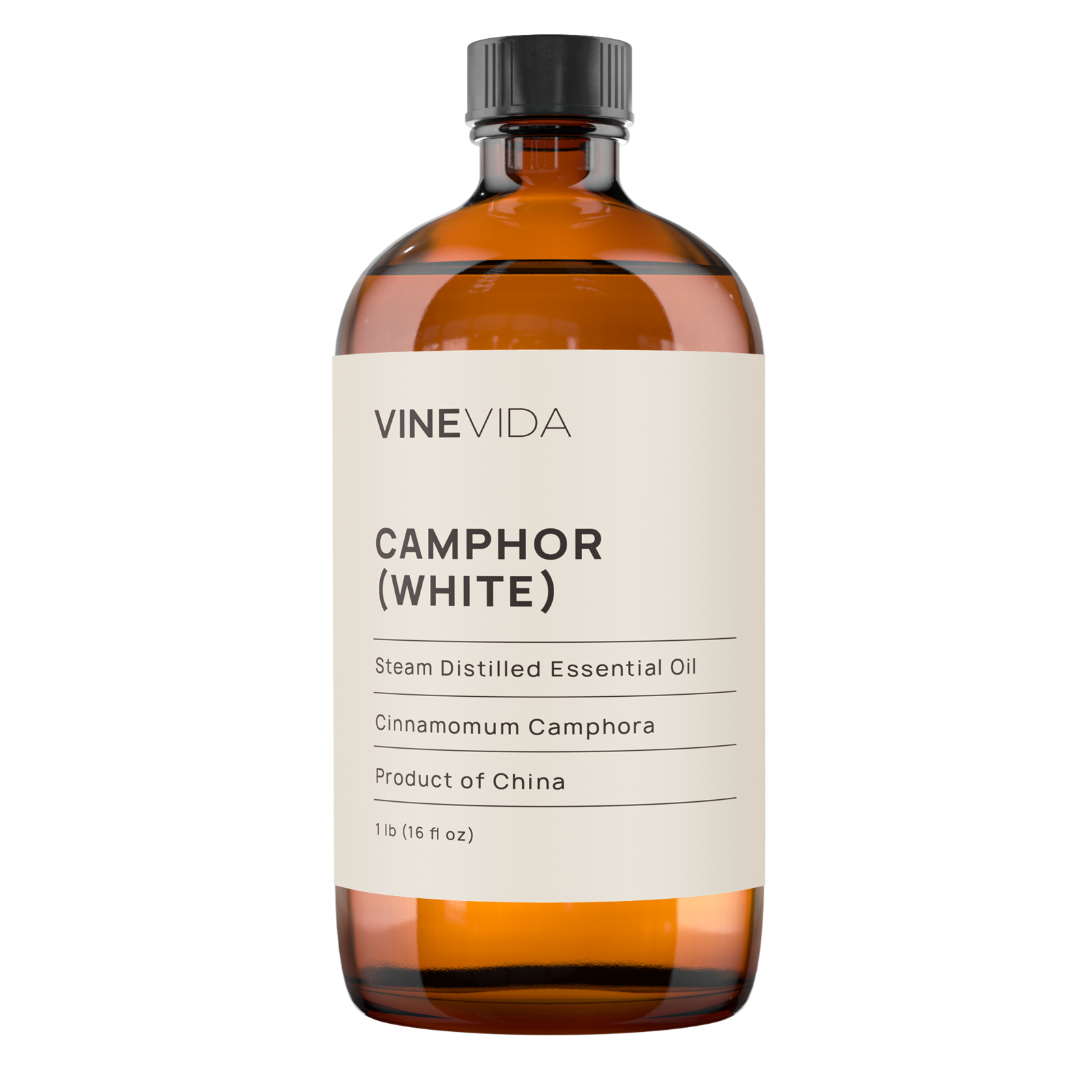
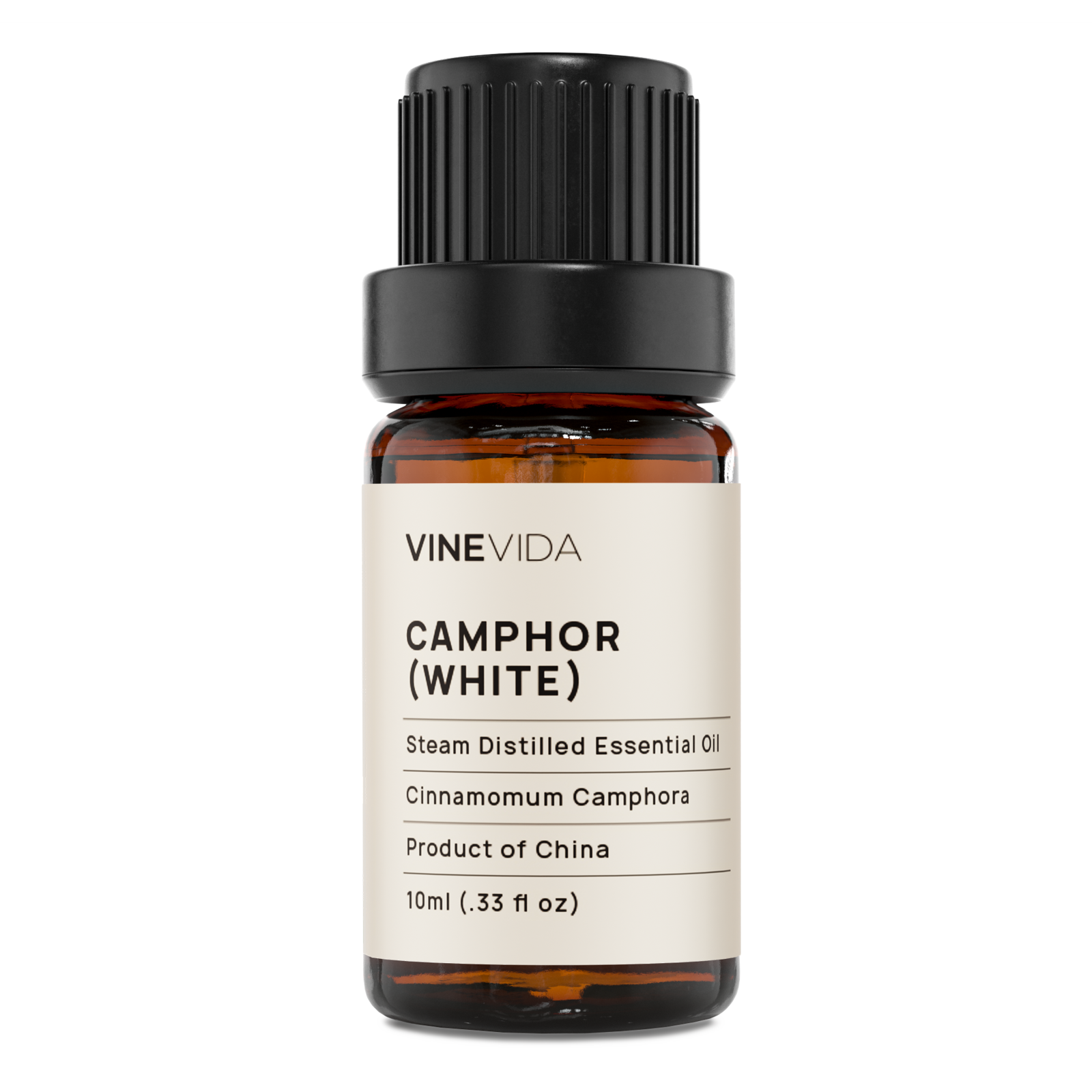
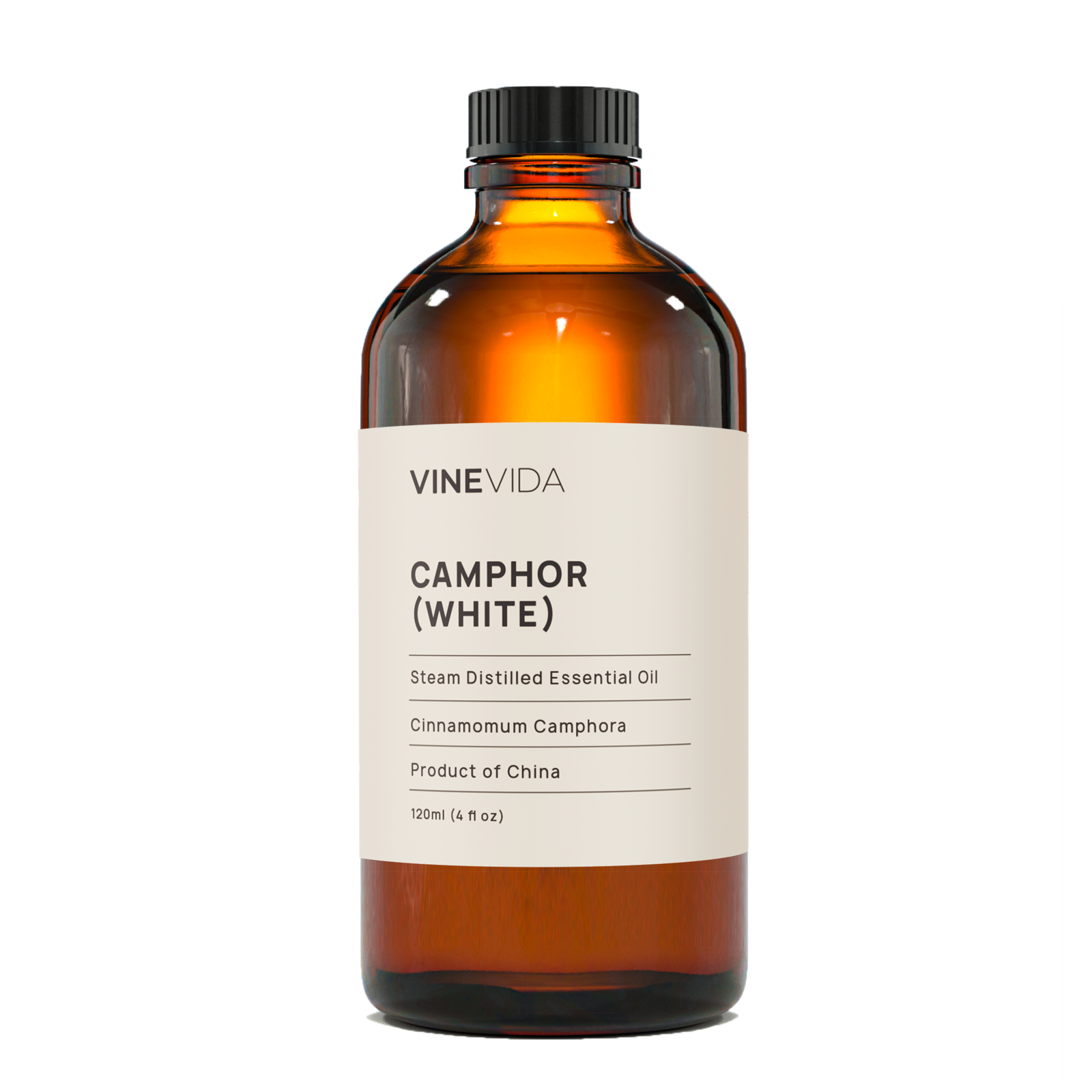
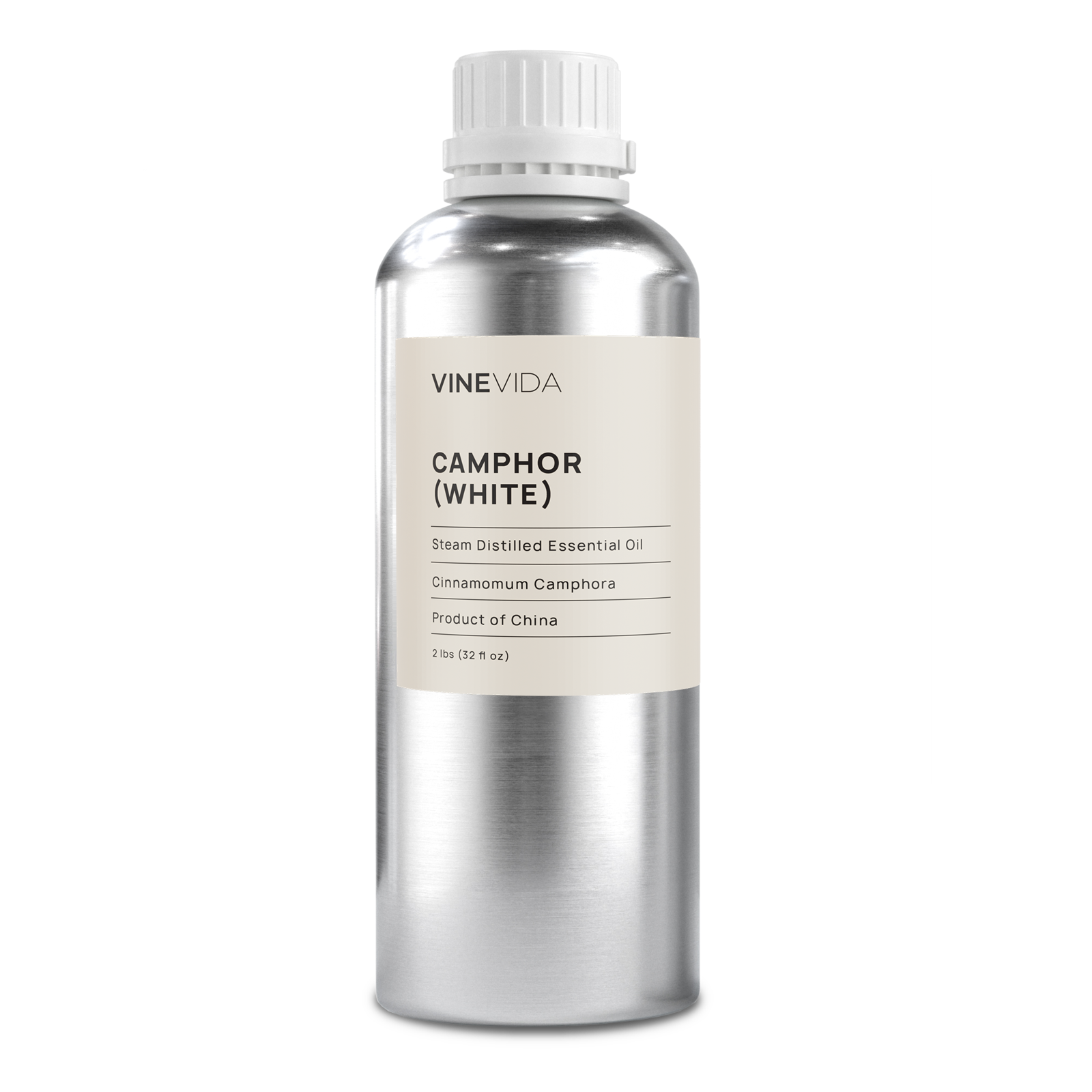
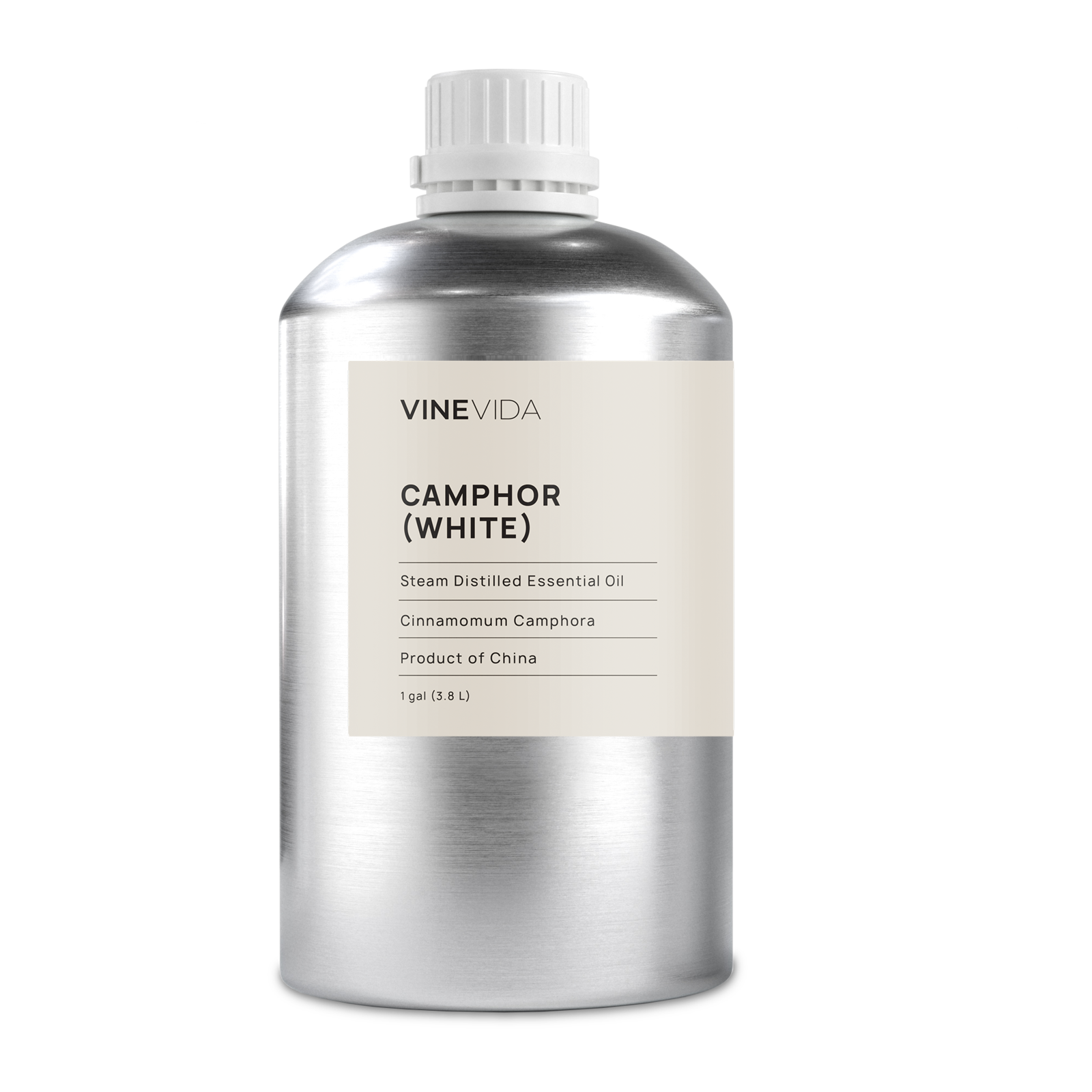
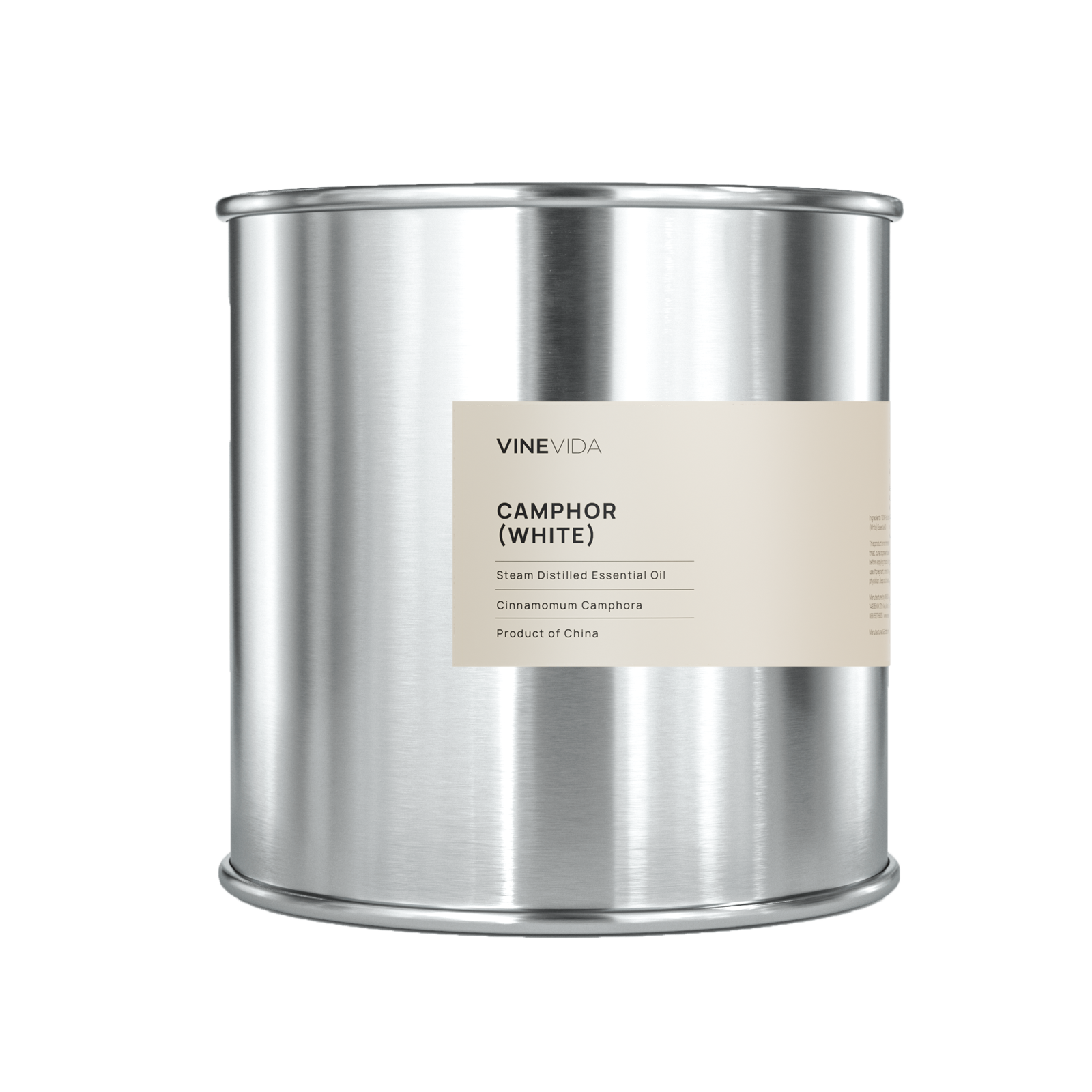
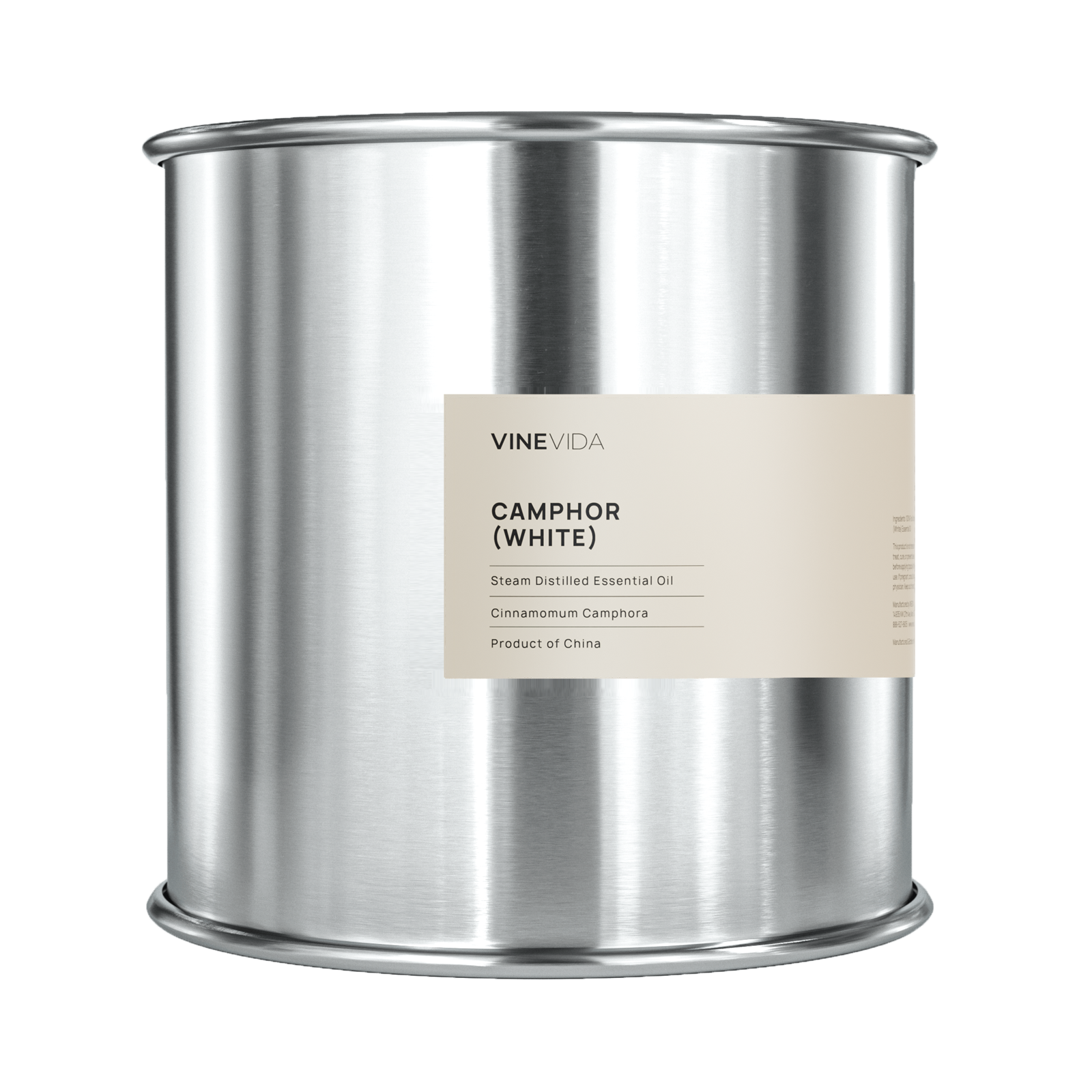
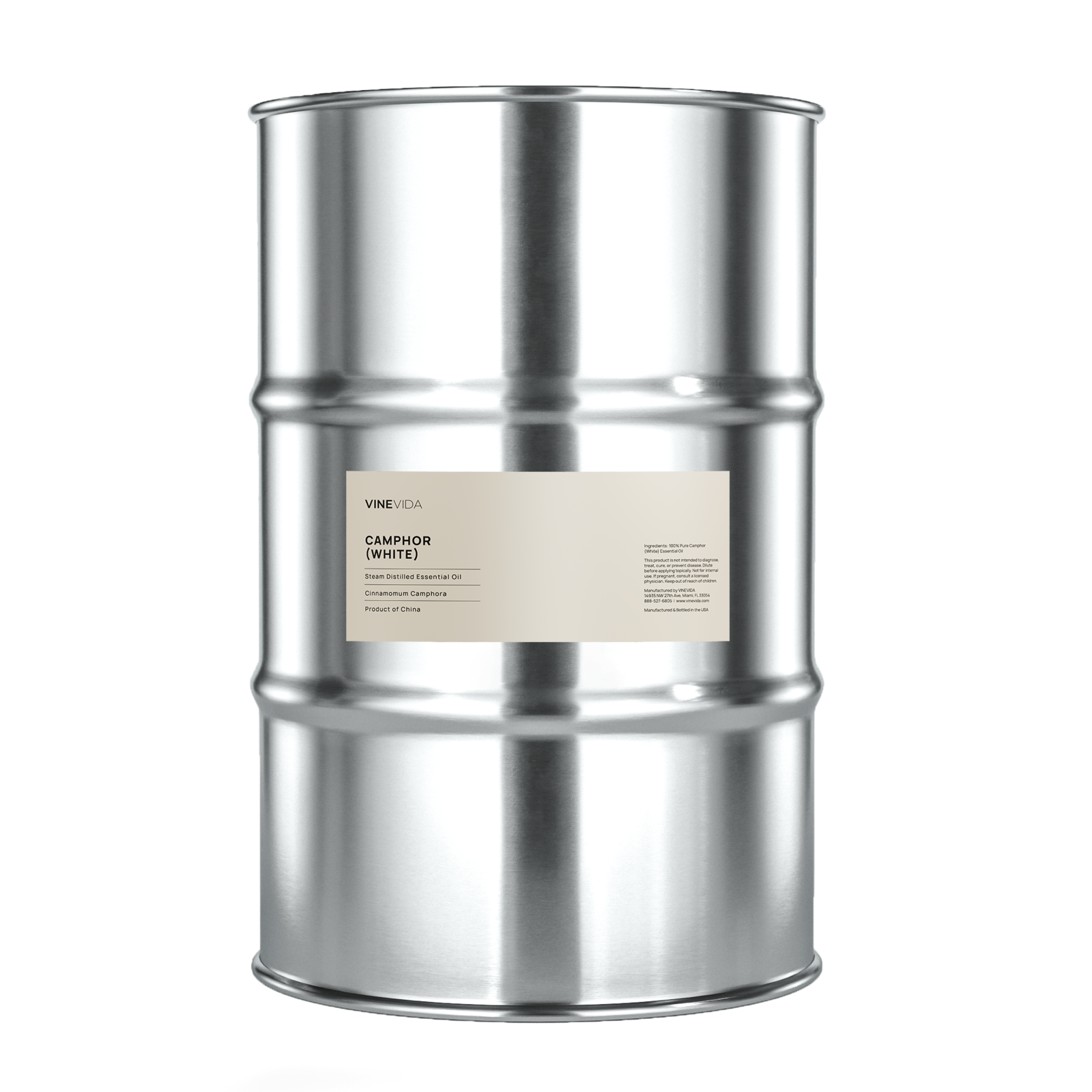





 Safety Data Sheet
Safety Data Sheet
















